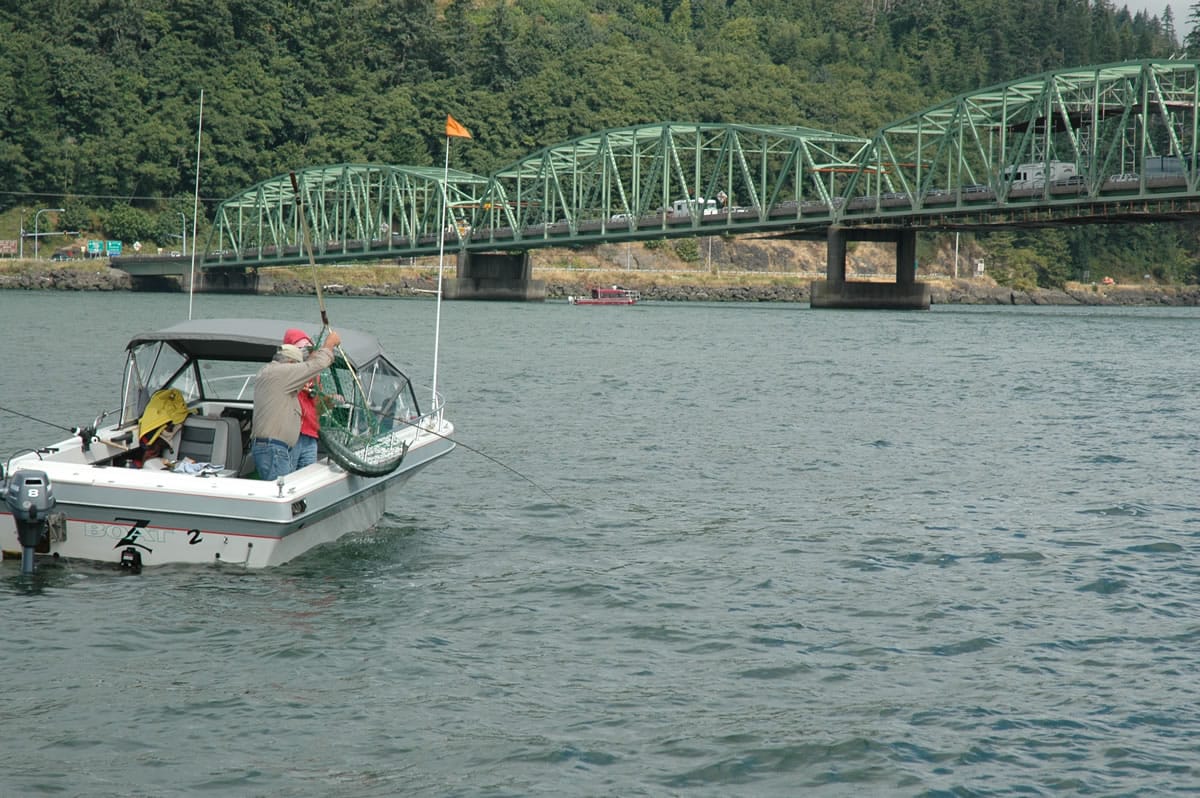RAINIER, Ore. — Intermittent sport-fishing closures at Buoy 10 and in the lower Columbia River are anticipated in August and September in order to allow for commercial purse and beach seining for salmon.
“We’ll probably have to have closures,” Ron Roler, Columbia River policy coordinator for the Washington Department of Fish and Wildlife told the Emerging Fishery Advisory Board here on Tuesday. “I can’t see a beach seine operating in an area where you have a whole bunch of people with rods on the beach.”
Commercial salmon fishing with purse seines and beach seines — for profit not just testing — is coming to the lower Columbia River in the fall of 2014.
Washington and Oregon plan to allow a limited number of seines in 2014, 2015 and 2016, transitioning to the phase-out of gillnets from the main stem Columbia in 2017.
The Emerging Fishery board is a five-member advisory panel specifically required by Washington law to work with the Department of Fish and Wildlife in developing the details.
Reforms jump-started by Oregon Gov. John Kitzhaber in mid-2012 and completed by the Washington and Oregon fish and wildlife commissions this year are bringing the most sweeping overhaul of lower Columbia River fisheries in 80 years.
The reforms allocate more chinook salmon to sportsmen in the main Columbia and restrict gillnetting to off-channel sites like Youngs Bay near Astoria or Deep River in Washington.
The reforms also require live-capture commercial fishing methods in the main Columbia — such as purse seines and beach seines — designed to harvest abundant hatchery stocks and release wild fish. The goal is to reduce hatchery fish on the spawning grounds used by wild fish.
Virtually all the details of the 2014 purse and beach seine pilot fisheries remain to be determined.
The states need fall salmon run forecasts for 2014 plus research information from test seining in 2013 that will not be available until late January. How the commercial share between seiners and the traditional gillnets will be split must be determined. It also is uncertain how many gillnetters will make the costly gear switch to seines.
But, for seining to be effective, it needs to be done on the peak of the salmon runs, Roler said.
“They have to be fishing at times the fish are around,” he said. “They’ve got to fish on the peak rather than nibbling at the edges.”
Roler said he doubts in 2014 the sport closures will need to be more than one day a week. Conservative seine seasons are a given in the initial year.
Sport closures multiple days a week could happen in future years.
“If we start finding success in this fishery, that (closures) could increase,” he said. “It will change things.”
Sportsmen will not lose any of their allocation, said Robin Ehlke of the Washington Department of Fish and Wildlife. Closure days can be tacked on at the end of the season.
“A closure one day doesn’t necessarily transfer to an additional open day later because of fish passage,” Roler said. “It is something for us to figure out….A day in August at Buoy 10 is not same as a day in September down there. If you close a day in August you’d get several days, three days, four days, I don’t know.”
Sport fishermen were vocal advocates in 2012 calling for the switch to live-capture commercial fishing methods such as purse seines and beach seines. But, unlike gillnets, the seines need to be fished in daylight, rather than at night.
The sport closures would be necessary to avoid conflicts on the water.
Roler said he’s also getting calls from tributary anglers who are figuring out that if the seines are effective at removing hatchery fish there will be fewer to catch in rivers like the Cowlitz and Lewis.
But the take-home message to sportsmen is change is coming.
“I thought it is time to bring this up to make sure there are no surprises when it starts coming about,” Roler said. “There will be some impact.”




